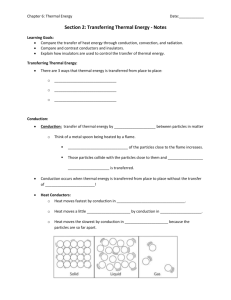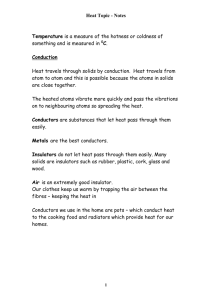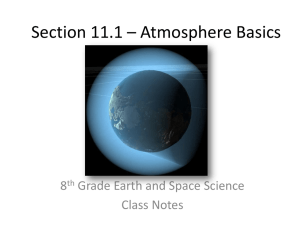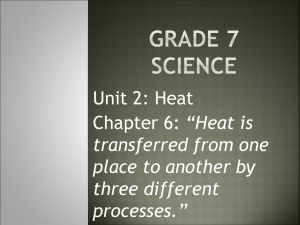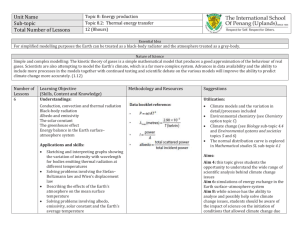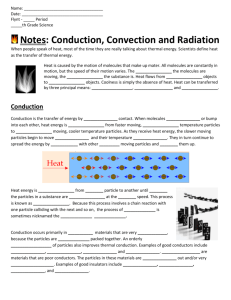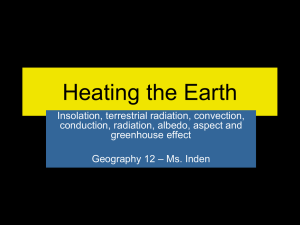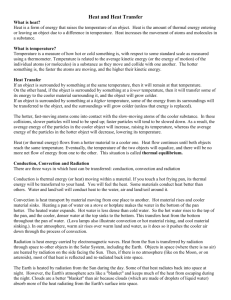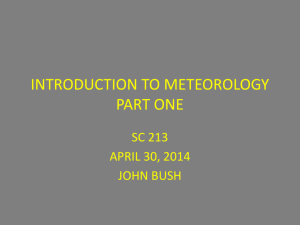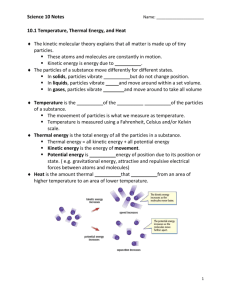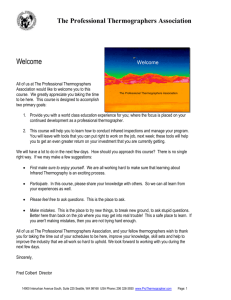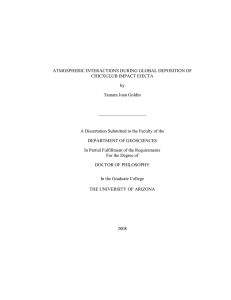Thermal Energy
advertisement
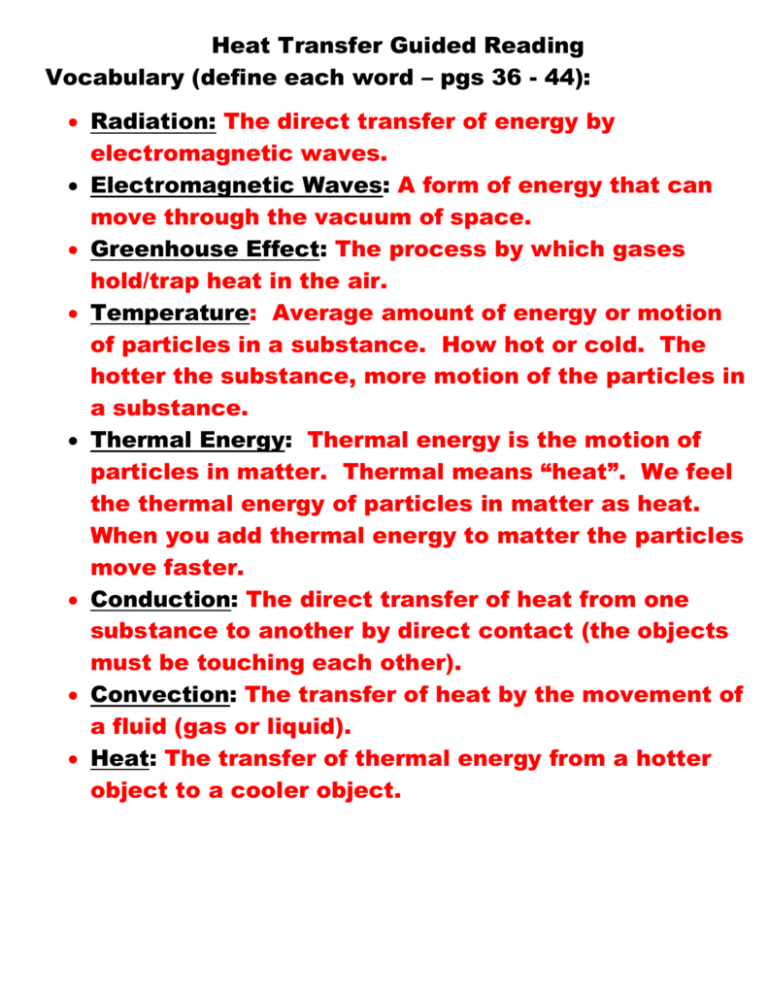
Heat Transfer Guided Reading Vocabulary (define each word – pgs 36 - 44): Radiation: The direct transfer of energy by electromagnetic waves. Electromagnetic Waves: A form of energy that can move through the vacuum of space. Greenhouse Effect: The process by which gases hold/trap heat in the air. Temperature: Average amount of energy or motion of particles in a substance. How hot or cold. The hotter the substance, more motion of the particles in a substance. Thermal Energy: Thermal energy is the motion of particles in matter. Thermal means “heat”. We feel the thermal energy of particles in matter as heat. When you add thermal energy to matter the particles move faster. Conduction: The direct transfer of heat from one substance to another by direct contact (the objects must be touching each other). Convection: The transfer of heat by the movement of a fluid (gas or liquid). Heat: The transfer of thermal energy from a hotter object to a cooler object. Energy from the Sun (pg 36): 1. Where does heat come from and how does it travel? Nearly all heat in Earth’s atmosphere comes from the Sun. 2. What kinds of energy do we receive from the Sun? Most of the energy from the Sun travels to Earth as visible light and infrared radiation (which we feel as heat). We receive a small amount of UV radiation as well. Energy in the Atmosphere (pg 38): 1. What happens to sunlight when it passes through the atmosphere? Some sunlight is absorbed or reflected by the atmosphere before reaching the surface, 50% is absorbed by Earth’s surface. 2. Why does the daytime sky appear blue? Dust particles scatter light in all directions. Short wavelengths, (blue and violet) are scattered more that longer wavelengths, (red and orange). Scattered light looks blue, making the sky appear blue. Energy at Earth’s Surface (pg 39): 1. How much of the Sun’s energy is absorbed by the Earth’s surface? What happens to the energy after it’s absorbed? About half, (50%) of the Sun’s energy is absorbed by land and water and changed into heat. When Earth’s surface is heated, it radiates most of the energy back into the atmosphere as infrared radiation. 2. Explain the greenhouse effect: A natural process that keeps Earth’s atmosphere at a temperature that is comfortable for most living things. How Heat is Transferred? (pg 44): 1. List the three ways heat is transferred. Radiation Conduction Convection 2. Explain radiation: You feel energy coming directly from the Sun as infrared radiation (heat). Example: Warmth of Sun’s rays on your face. 3. Explain conduction: When a fast moving molecule (hotter) bumps into a slower moving molecule (cooler), the faster moving, hotter molecule transfers heat (thermal) energy to the other particle. Example: Feet burned by walking on hot sand. 4. Explain convection: Liquids and gases move easily. As the particle move , their energy goes along with them. Example: Convection currents, warm air rising and cold air sinking in the atmosphere. 5. How do the three types of heat transfer work together to heat the troposphere? During the day, the Sun’s radiation heats Earth’s surface. Land becomes warmer that air. The warm surface of the Earth heats the air above it by conduction. Most of the air is heated by convection – the warm air rises (less dense), as it rises it cools and becomes denser. The cool air sinks and is heated by conduction (the heated surface of the Earth), and the cycle begins again.






